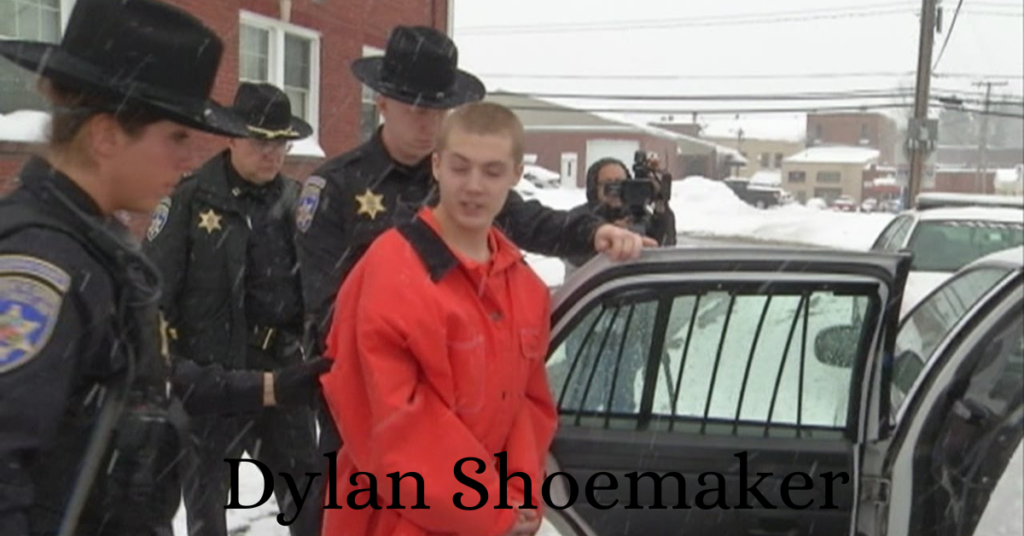Dylan shoemaker: A Tale of Remorse and Justice Explained
Background:
Dylan Shoemaker chaotic and tumultuous childhood led to Austin Smith’s bad ending, a brutal fight. This event brought up issues with the existing support structure, and there were calls for reform that have been taking place until today. The hard time ended, but the community underwent a philosophical examination that highlighted the necessity to boost awareness of mental well-being and compassion. A series of discussions about reform made it clear that collective action should play a major role in creating a more just and humane society.
Main Characters:
- Dylan Shoemaker: The primary person involved in the controversy, is a multi-layered being enduring a difficult situation while yearning for an understanding of his actions.
- Austin Smith: The hapless innocent, who embodies the purity of innocence, where his agonizing death becomes the spark to the flame of justice and redemption.
- Judge M. William Bowler: The steadfast representative of justice whose unmistakable grit and somberly formal veneer mirror the search for absolute truth and resolution.
- Shoemaker’s Defense Attorney: A beacon for them in the storm of the legal process that doesn’t rest its case for Shoemaker’s repentance with the power of atonement.
- Austin Smith’s Mother: Not only psychological support, but she also re-exposing the collective shock and grief of the community affected as the strong strength.
Incident Overview:

In the final scene, a fantastic darkness unveils the cruel event, immersing the spectators into the horror and prompting them to grasp the severity of the human drama. Here, individuals can become the essence within the souls of men. Furthermore, a crescendo of fragmentation by Shoemaker swooping down on the bottomless pit serves as the catalyst, igniting a tragic accident that induces despair and remorse beyond measure within the community.
On the courtroom brushing for the outburst, the veil of regret and remorse rises inch by inch, until it eventually exposes the figments of humanity, power and perseverance in the chase for justice. By the end of the story, first-person narration enables the Shoemaker to uncover Austin’s dreadful fate, resulting in a conclusion fraught with pain despite unresolved matters.
Final Case Hearing:

The peak of the court session emerges with the mood when temper and grace go hand in hand, leaving everything behind like beauty and decay that occurred earlier, leaving only justice as the crown of the experience. The case is set to start where the words will be battling and emotions offered by prosecution and the defence. Each of them will be attempting to move his or her judge plea closely on adulating hope for closure as the final verdict looms.
The climax of the moral argument reveals the prosecution’s bitter allegation, consequently emphasizing the depth of Shoemaker’s crime. On the other hand, the offensive defense’s tip of the iceberg of remorse and salvation serves to highlight a contrasting perspective. The courtroom becomes a fashioned drama platform, wherein the interchanging heartbeats of attendants contribute to the atmosphere, as they strive for common justice goals.
Verdict and Sentencing:
Only a sentence delivered by Judge Bowler in a setting of the weight of expectation and the ghosts of remorse can sound like tragic irony and the echoes of redemption. Shoemaker’s destiny is none other than to undertake the journey of self-examination using self-blame as a tool.
When Judge Bowler utters the sentence, a gloomy silence pervades the courtroom, with only sounds of woes and feelings of contentment breaking the quiet. Throughout the finality of the justice of revenge, Shoemaker demonstrates strength as he faces trials anytime, showing himself to be a person in search of that justice.
Conclusion:
The Dylan Shoemaker case holds a statue of justice that cannot be shaken and of the strength of remorse that cannot be quit. Through the deflection from the tragedies and the glimpses of redemption in the play, we come to understand the utter delicateness of life and the implication of our deeds on it.
And the memory of Austin as the community struggles with the aftermath of his abrupt death almost two years ago, serves as a beacon of light and hope in the dark, testimony of the prevailing power of justice and the pledge of His redeeming spirit. Somehow, the journey towards the restoration of peace and justice can be difficult and hard, but the hope is still present, giving the survivors and their families some comfort at their most vulnerable.
FAQs
I wanted to know what incensed Dylan Shoemaker and Austin Smith so much that they even got caught in a fight.
The attack took place purely on impulse, and by Shoemaker being an uncontrollably aggressive act. He focused solely on achieving the motive, disregarding the long-lasting effects of the deadly selection he made regarding Austin Smith.
Regarding the incident which resulted in the death of an elephant, was Dylan Shoemaker remorseful?
Shoemaker’s impassioned plea in court and his public expression of deep regret not only provided evidence of his guilt-consciousness but also demonstrated his awareness of the grief he had inflicted upon Austin Smith and his family.
Shoemaker’s fate, however, was decided by a judge who was also influenced by several factors.
The judge considered the seriousness of the crime, Shoemaker’s level of remorse, his criminal record, and how it impacted the relationship between the victim and their family. The judge’s diction is mainly based on the masterpieces of justice and the worst need to show up punishment to the Shoemaker for doing something wrong.
For more interesting information visit https://editorialdiary.com





